37 Best Things To Do – The Ultimate Portugal Bucket List
What’s on our ultimate Portugal bucket list?
We absolutely loved our month-long road trip in Portugal as a family. It gave us a chance to see some of the best attractions, destinations and sites that the country has. And from our experiences we’ve been able to put together our ultimate Portugal bucket list.
From epic days at the beach in Nazare to historical adventures in Tomar and sunsets in Sagres, we enjoyed it all. We’ve tried to capture something for everyone whether that families, kids or solo travellers. Portugal is also listed as one of the best places in the world to go as a digital nomad family. Believe it or not, we’ve taken our original list of over 50 things that we loved down to the best 37, we hope you enjoy them!
Quick Guide to Our Portugal Bucket List
For food & drink lovers: Drink Port wine in the Douro Valley, eat Pastel de Nata in Belem & join a Portuguese food tour in Lisbon
Best outdoor adventures – Big wave hunting in Nazare, Paiva Walkways and Seven Hanging Valleys
For history lovers – Pena Palace in Sintra, Guimaraes, Coimbra and Obidos
Best for families – Ride Tram number 28 in Lisbon, take a 6-Bridges Cruise in Porto & go beach hopping in Lagos
For animal lovers – Whale watching in the Azores, swim with dolphins in Madeira & go diving in the Algarve
Portugal Bucket List – Lisbon
1. Ride the #28 tram in Lisbon

When visiting the capital city of Portugal, Lisbon, riding the iconic #28 tram is a must-do experience. It should be on everyone’s Portugal bucket list. This historic tram line takes you on a journey through the city’s narrow streets, steep hills, and vibrant neighbourhoods. And offers a unique way to explore Lisbon’s charm and character.
The #28 tram route winds its way through some of Lisbon’s most picturesque and historic neighbourhoods. Including Graça, Alfama, Baixa, and Estrela. As you ride the tram, you will pass by famous landmarks such as São Jorge Castle, Sé de Lisboa (Lisbon Cathedral), and Miradouro da Graça, providing you with panoramic views of the city and its surrounding park. The route also takes you past charming squares, traditional cafes, and colourful tiled buildings that showcase Lisbon’s unique architectural style.
2. Eat Pastel de Nata in Belem

In our minds, no visit to Portugal would be complete without indulging in some Pastel de Nata. These delicious custard tarts, with their crispy flaky crusts and creamy egg custard fillings, are a staple of Portuguese cuisine. And a must-try for foodies and sweet-toothed travellers like us! While you can find Pastel de Nata in bakeries and cafes throughout Portugal. One of the best places to enjoy this delectable treat is in the historic district of Belem in Lisbon.
Belem is renowned as the birthplace of Pastel de Nata. And the original recipe dating back to the 18th century at the famous Jerónimos Monastery. The monks at the monastery used egg whites to starch their clothes, resulting in an excess of yolks that were then used to create the delicious custard filling for these iconic tarts. Today, you can visit the Pastéis de Belém. This bakery near Jerónimos Monastery is where you can enjoy freshly baked Pastel de Nata in a historic setting that has been serving these delectable treats for generations.
3. Explore the Unique Museums of Lisbon
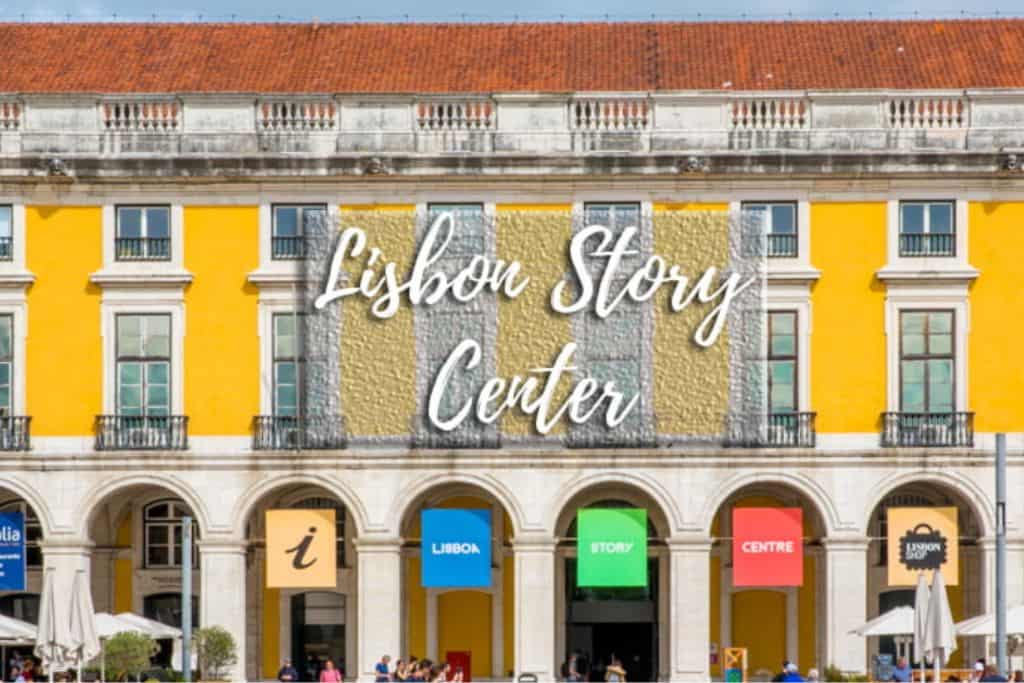
Lisbon is home to a diverse array of museums that showcase the country’s rich history, art, and culture. From ancient artefacts and contemporary art to interactive exhibits and immersive experiences, Lisbon’s museums offer something for all travellers. Whether you are a history buff, an art enthusiast, or a curious explorer, exploring the unique museums of Lisbon is a great way to immerse yourself in Portugal’s heritage and creativity. If you have kids and are visiting Lisbon then there are some great options for them as well. We particularly loved the Oceanarium and Science Museum.
Some of the best museums in Lisbon are:
- MAAT – Museu de Arte, Arquitetura e Tecnologia
- Calouste Gulbenkian Museum
- Maritime Museum
- The Lisbon Story Centre
4. Listen to Fado Music in Chiado
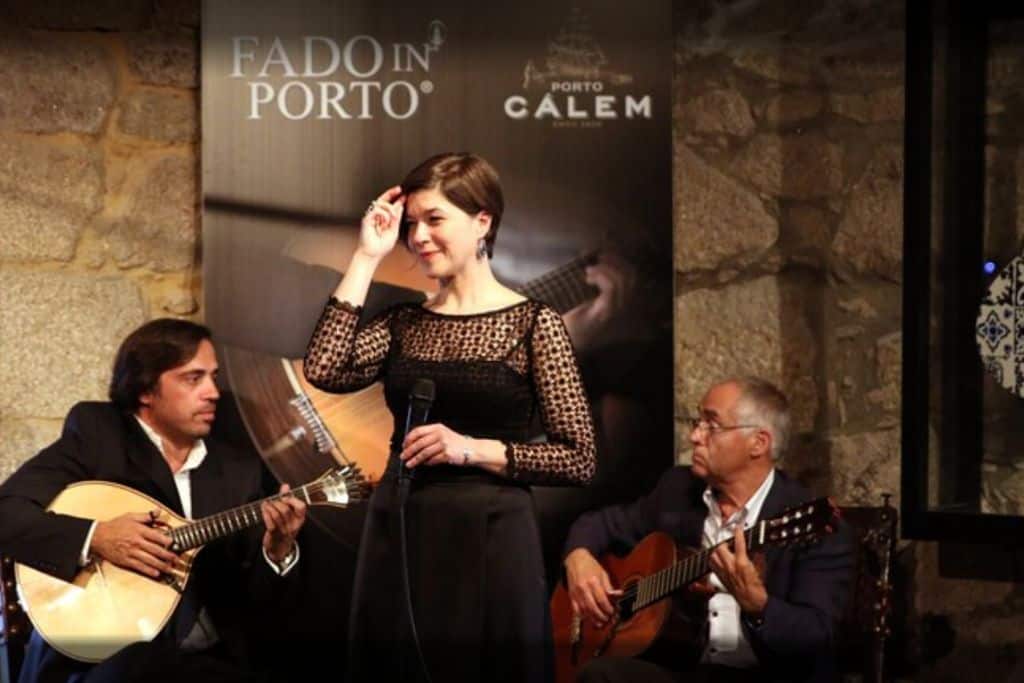
When visiting Lisbon, immersing yourself in the soul-stirring melodies of Fado music is an experience that should not be missed. Fado is a traditional Portuguese music genre that expresses feelings of longing and melancholy. Listening to Fado in the historic district of Chiado is a great way to connect with Portugal’s musical heritage.
Fado music is typically performed in small, intimate venues known as Fado houses or restaurants. This is where musicians and singers create an atmosphere that is both haunting and captivating. In Chiado, you can find a variety of Fado venues that offer nightly performances featuring talented fadistas (Fado singers) accompanied by skilled guitarists. The cozy ambiance, dim lighting, and soulful tunes of Fado create a memorable and emotionally charged experience for listeners.
5. Join a Portuguese Food Tour in Lisbon
Portugal is renowned for its delicious cuisine. It blends fresh seafood, flavourful spices, and traditional cooking methods. This creates a culinary experience that is both diverse and delectable. One of the best ways to sample the country’s culinary delights is by joining a Portuguese food tour in Lisbon. As a family we love to join food tours whenever we travel. These guided tours take you on a gastronomic journey through the city’s markets, eateries, and cafes, allowing you to taste a variety of traditional dishes. While also learning about the history and culture of Portuguese food.
During a food tour, you will usually have the chance to sample a variety of traditional Portuguese dishes. Dishes such as bacalhau (salted codfish), caldo verde (kale soup), pasteis de nata (custard tarts), and bifana (pork sandwich). Each dish offers a unique blend of flavours, textures, and aromas that reflect the country’s diverse culinary influences.
6. Explore Unique Architecture in Belem
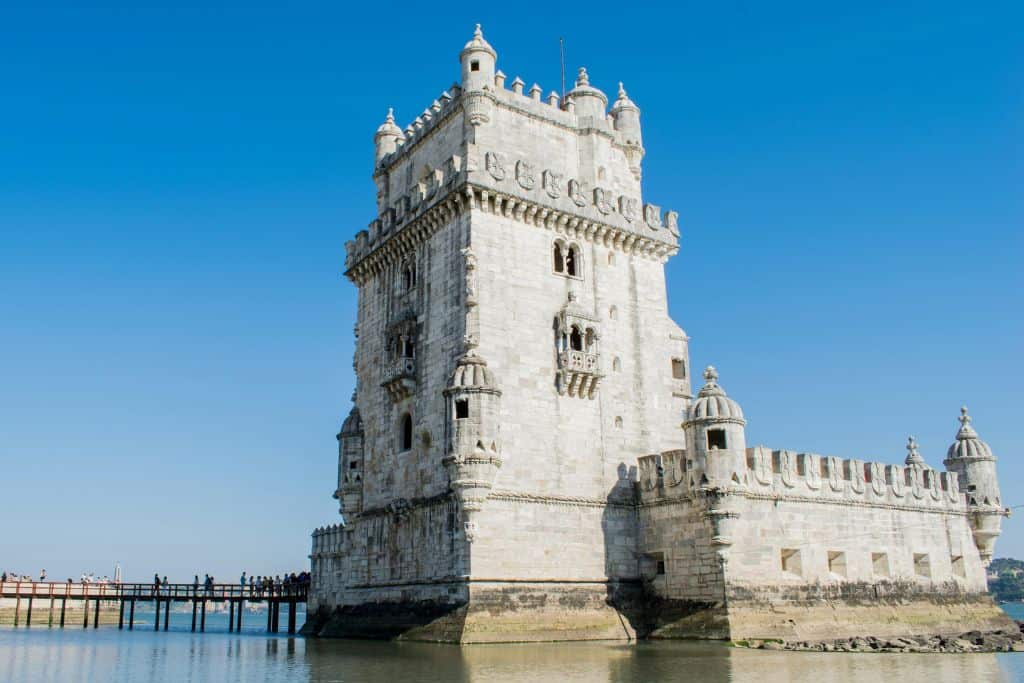
Belem is a historic district in Lisbon that is renowned for its unique architecture. It specifically showcases Portugal’s maritime heritage, cultural achievements, and artistic innovations. From grandiose monuments and ornate churches to iconic landmarks and contemporary structures, Belem’s architectural landscape offers a fascinating blend of styles, periods, and influences. These all combine together to tell the story of Portugal’s past and present. Exploring the unique architecture in Belem is a great way to appreciate the city’s artistic heritage. You can marvel at the creativity and craftsmanship of its builders and designers. We loved visiting Belem as we could walk along the waterfront as Cameron happily scootered next to us.
Jerónimos Monastery
One of Belem’s most iconic architectural marvels is the Jerónimos Monastery. It is a masterpiece of Manueline style that exemplifies Portugal’s golden age of exploration and discovery. This UNESCO World Heritage Site features intricate stone carvings, elaborate cloisters, and majestic vaulted ceilings. These showcase the wealth and power of the Portuguese monarchy.
Tower of Belem
Another must-see architectural gem in Belem is the Tower of Belem. This is a fortified tower that stands proudly on the banks of the Tagus River. Another UNESCO World Heritage Site that served as a defensive fortress and ceremonial gateway during Portugal’s Age of Discovery. The tower’s design features maritime motifs, sculpted stone balconies, and battlements that evoke the country’s seafaring past and global ambitions.
Discoveries Monument
The Discoveries Monument, is a striking architectural tribute to Portugal’s explorers, navigators, and pioneers. This monumental sculpture is shaped like a ship with towering figures of historical figures. It was built to celebrate the country’s maritime achievements and cultural legacy.
Portugal Bucket List – Sintra
7. Take a Day Trip From Lisbon to the Beautiful Pena Palace

Located in the picturesque town of Sintra and just a short drive from Lisbon is the Pena Palace. A is a fairytale-like castle, that will capture your imagination and transport you to another era. This romantic and whimsical palace, perched on a hill overlooking the surrounding park, is a UNESCO World Heritage Site. It embodies the architectural extravagance and romanticism of the 19th century. Taking a day trip to the Pena Palace is a great way to explore Portugal’s cultural heritage. You can marvel at its remarkable gardens, and immerse yourself in a fairytale setting that is both enchanting and unforgettable.
In addition to its majestic palace, the Pena Park surrounding the castle is a vast and lush landscape that features remarkable gardens, winding pathways, and hidden grottoes waiting to be discovered. The park’s panoramic viewpoints offer breathtaking vistas of the palace, the town of Sintra, and the rolling hills of the surrounding countryside. We hiked up to the top of Cruz Alta, the highest point in the region at 529m with great views of Sintra.
Top tip from a travel family: Make sure to wear comfy shoes as there’s a lot of walking. If you have kids with you we’d recommend using carriers rather than prams. And, make sure you book your tickets in advance as the palace gets busy. And if you miss your time slot you’ll have to rebook!
8. Walk Down the Mysterious Initiation Wells of Quinta da Regaleira
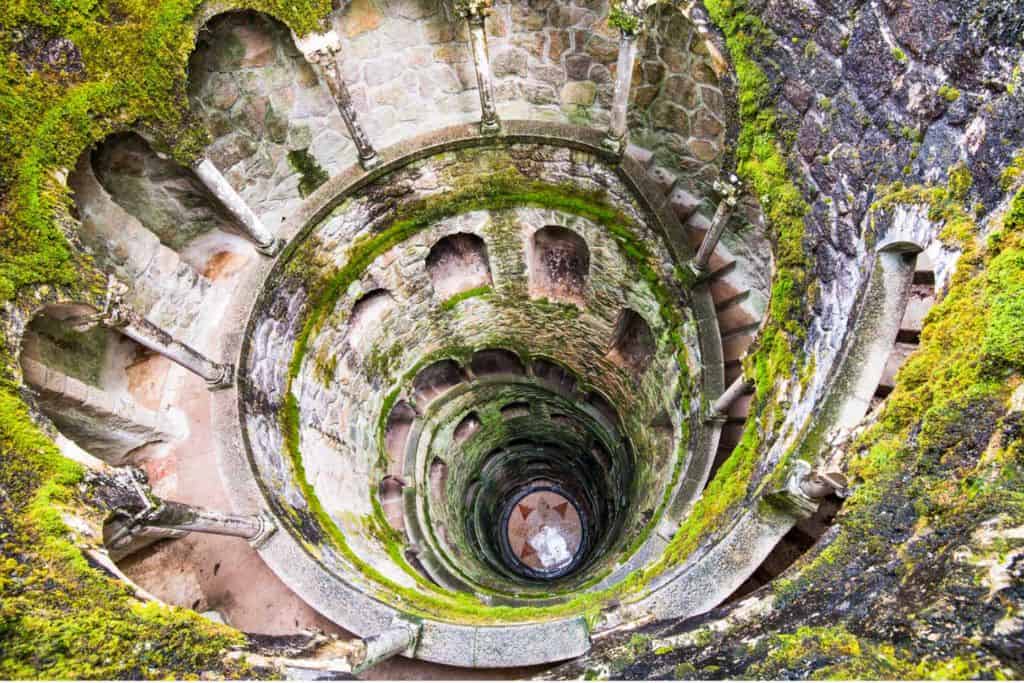
Quinta da Regaleira in Sintra, is another UNESCO World Heritage Site. It is best known for its enchanting gardens and mystical architecture. One of the highlights of the estate is the mysterious initiation wells. These are two underground towers with spiral staircases that lead to the depths of the earth.
The initiation wells are believed to symbolise a journey into the underworld, with each step representing a stage of enlightenment. As you descend into the depths of the well, pay attention to the intricate carvings and symbols that adorn the walls – each telling a story of the past.
Top tip from a travel family: If you want to get the initiation wells to yourself you’ll need to make Quinta da Regaleira the first stop on your visit to Sintra. If you arrive later in the day then you can expect to queue between 1-2 hours.
9. Walk the Medieval Walls of the Moorish Castle in Sintra
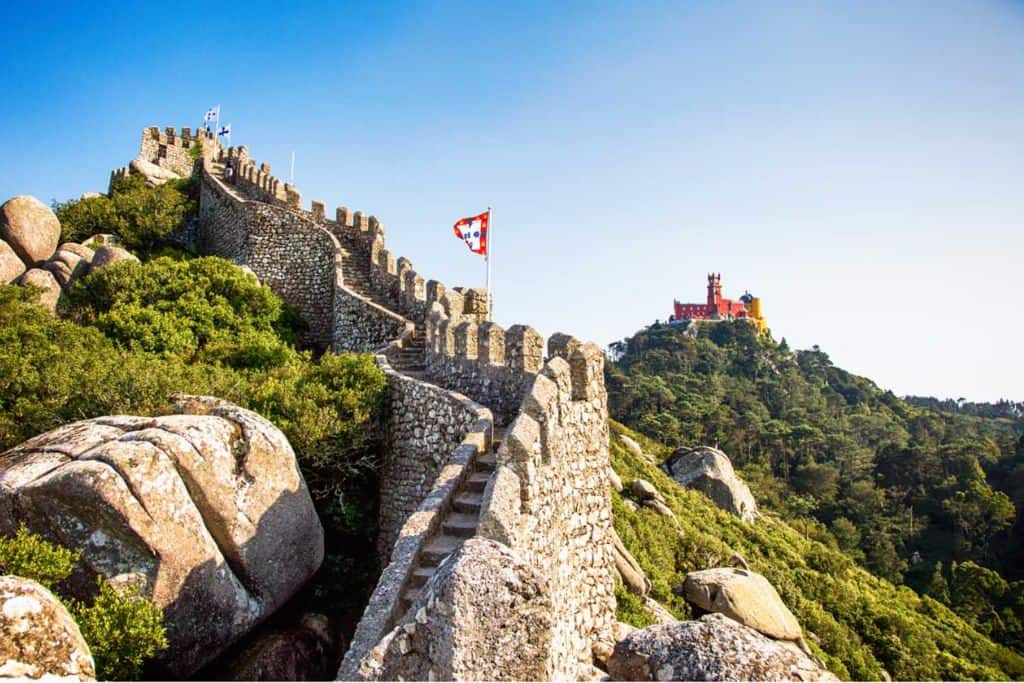
One of our favourite things to do in Sintra was to walk the medieval walls of the Moorish Castle. This historical castle offers stunning views of the surrounding park and the Atlantic Ocean. The castle dates back to the medieval times and provides visitors with a glimpse into Portugal’s rich history and heritage.
As you walk along the ancient walls of the Moorish Castle, you’ll be treated to stunning panoramic views all the way to the Atlantic Ocean. You should also be sure to take your time as you explore the castle grounds, as there are many hidden corners and viewpoints to discover along the way.
Portugal Bucket List – Porto
10. Go Azulejo Hunting in Porto
Porto, Portugal’s second-largest city, is famous for its stunning azulejo tiles that adorn many buildings across the city. Azulejos are traditional Portuguese ceramic tiles that feature intricate designs and patterns. One of the best ways to experience Porto’s azulejos is to go azulejo hunting, where you can wander the streets in search of these colourful tiles.
We found that if you have children with you then this adds a bit of fun when you are walking around Porto. Some of the best places to find azulejos in Porto include the São Bento Train Station, the Chapel of Souls, and the Church of Saint Ildefonso. Take your time to admire the artistry and craftsmanship of these beautiful tiles as you explore the city.
11. Enjoy a 6-Bridges Cruise in Porto

One of the best ways to experience the beauty of Porto is by taking a 6-bridges cruise along the Douro River. This scenic boat trip takes you past some of the city’s most famous landmarks and offers stunning views of the historic Ribeira district, the iconic Dom Luís I Bridge, and the colorful buildings that line the riverbanks. A 6-bridges cruise is a great way to see Porto from a different perspective and learn about the city’s rich history and culture.
As you cruise along the Douro River, you’ll pass under six different bridges. Each bridge connects the city of Porto to Vila Nova de Gaia, where many of the famous port wine cellars are located. Each bridge has its own unique design and history, adding to the charm of the cruise. Be sure to have your camera ready to capture the best views of the city skyline and the Douro River as you sail past .
12. Cruise the Douro River and Valley

Another great way to experience the beauty of the Porto region is by taking a leisurely cruise along the Douro River. This relaxing boat trip allows you to soak in the picturesque landscapes of the Douro Valley, a UNESCO World Heritage Site known for its terraced vineyards, quaint villages, and scenic beauty. Cruising the Douro River is a great way to unwind and appreciate the natural splendor of this region.
You’ll be treated to breathtaking views of the surrounding hillsides, vineyards, and olive groves that dot the landscape.
The Douro Valley is famous for its port wine production. And you’ll have the opportunity to see the vineyards up close as you sail past them on the river. Be sure to have your camera ready to capture the stunning views and unique landscapes.
13. Drink Port wine in the Douro Valley
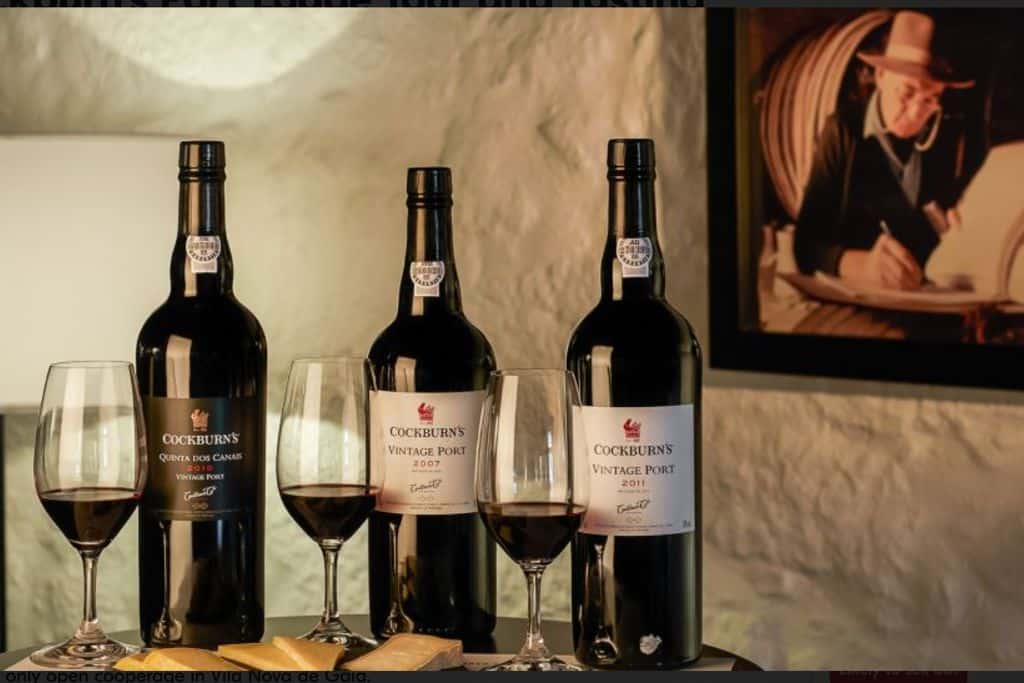
Port wine is one of Portugal’s most famous exports, and there’s no better place to enjoy it than in the Douro Valley. This picturesque region is home to some of the oldest port wine estates in the world. You can sample a variety of ports while taking in the stunning views of the vineyards and the river below. Drinking port wine in the Douro Valley is a great way to immerse yourself in Portugal’s winemaking heritage.
Take a guided tour of the cellars of one of the wineries to discover the secrets behind port wine. And, of course, sample different varieties to find your favourite. Whether you’re a wine connoisseur or just appreciate a good glass of wine, a visit to the Douro Valley’s wine cellars is a must-do activity during your trip to Portugal.
14. Ride a Moliceiro Boat in Aveiro
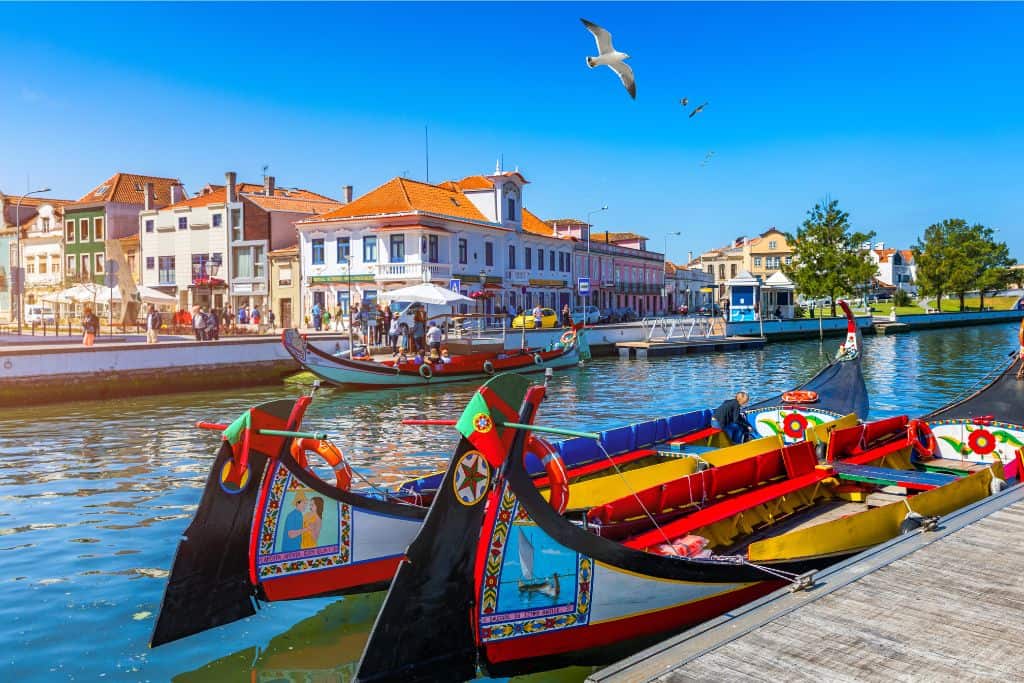
Aveiro is often referred to as the “Venice of Portugal”. It is a charming town known for its picturesque canals, colourful moliceiro boats, and Art Nouveau architecture. The best ways to experience Aveiro’s unique charm is by taking a ride on a moliceiro boat. And at the same time learn about the town’s maritime history. A moliceiro is traditional vessel used for harvesting seaweed in the nearby lagoon.
As you glide along the canals you’ll pass by charming houses, historic buildings, and picturesque bridges that span the waterways. Be sure to listen to the boatman’s stories about Aveiro’s history and traditions as you cruise through the canals. Aveiro’s architecture is a blend of traditional Portuguese style and Art Nouveau influences. This creates a visually appealing backdrop for your boat ride.
Portugal Bucket List – The Centre of Portugal
15. Visit the Birthplace of Portugal in Guimaraes
Guimaraes, a UNESCO World Heritage Site, is often referred to as the birthplace of Portugal. Because it was there that the country’s first king, Afonso I, was born in the 12th century. This historical place is steeped in rich history and is a great destination for travellers looking to learn more about Portugal’s origins. It is home to well-preserved medieval architecture, charming cobblestone streets, and a that celebrates its cultural significance.
A visit to Guimaraes wouldn’t be complete without exploring its historic centre. There you’ll find the impressive Guimaraes Castle and the iconic Paço dos Duques de Bragança. The castle dates back to the 10th century and offers panoramic views of the town and surrounding countryside. The Paço dos Duques de Bragança is a beautiful palace that once served as the residence of the Dukes of Braganza and now houses a museum showcasing the region’s history.
16. Tour One of the World’s Oldest Universities in Coimbra
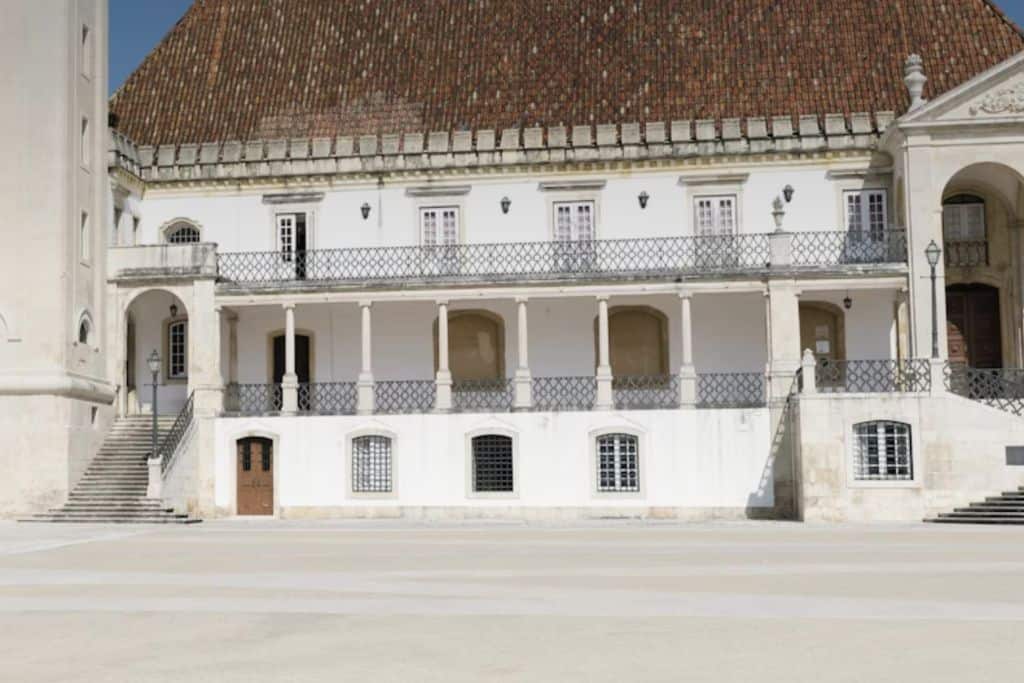
Coimbra is home to one of the world’s oldest universities. Dating back to the 13th century, it is known for its gardens, historic buildings, and stunning views of the city. A tour of the university is a great way to learn about Portugal’s educational heritage.
One of the highlights of the University of Coimbra is the Joanina Library. This Baroque masterpiece that houses a collection of rare books and manuscripts dating back centuries.
In addition to the library, be sure to explore the university’s grounds. These are filled with beautiful gardens, historic buildings, and charming courtyards. Walk the same halls as Portugal’s brightest minds and admire the architecture that has stood the test of time.
17. Hike the stunning Paiva Walkways

One of the best thing that that we did on our trip to Portugal was to hike the Paiva Walkways. Even if it meant carrying both kids most of the way – it was a great way to exercise! The Paiva Walkways, are a set of wooden walkways that wind along the Paiva River in Arouca. The highlight of this hike is crossing the Arouca 516, Europe’s longest pedestrian suspension bridge because it offers stunning views of the surrounding nature. This adventure is perfect for nature lovers and thrill-seekers looking to immerse themselves in Portugal’s natural beauty.
What’s great is that the Paiva Walkways provide an immersive experience in nature. Because they allow you to explore the pristine landscapes along the river and witness the natural beauty of Portugal up close. It has it all from lush forests to cascading waterfalls. Don’t forget your swim gear, because if you’re anything like us you’ll enjoy a wild swim to cool off!
18. Take a Stroll in the Enchanting Bucaco National Forest
For a peaceful retreat into nature, a visit to the Bucaco National Forest is a must. Located near the town of Luso, this enchanted forest is home to a diverse range of plant species, exotic trees, and winding pathways. A wander through Bucaco National Forest is a wonderful way to unwind and appreciate the beauty of Portugal’s natural landscapes. You’ll come across charming chapels, historic monuments, and picturesque viewpoints that offer panoramic vistas of the surrounding greenery.
19. Explore Tomar, Batalha, and Alcobaca – The Trio of UNESCO World Heritage Sites in Central Portugal
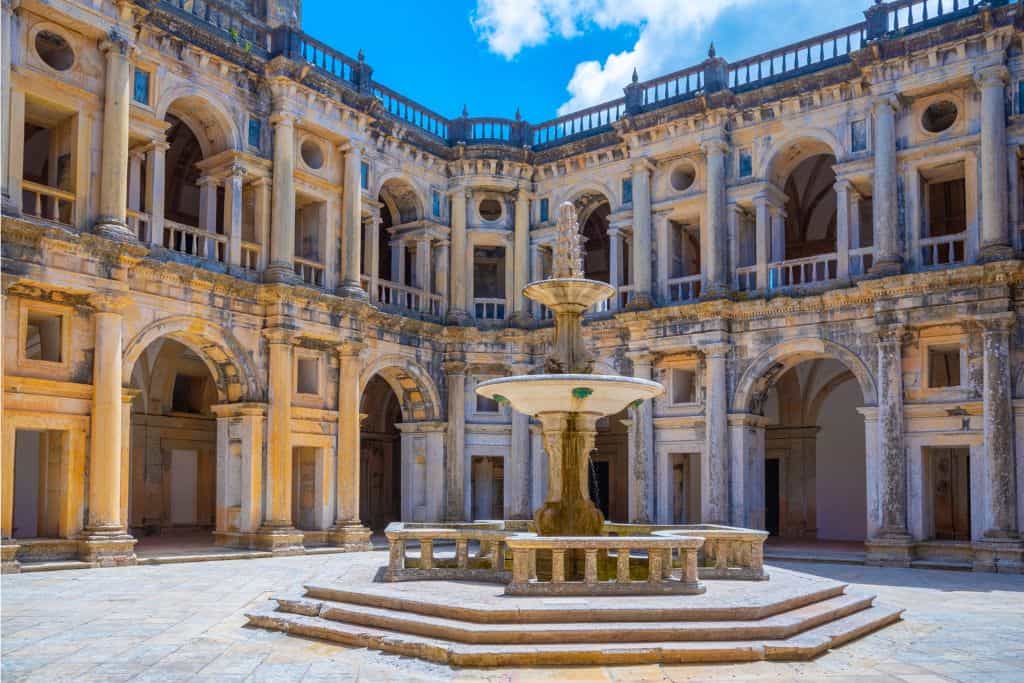
Central Portugal is home to a trio of historic towns that have been designated as UNESCO World Heritage Sites. These are Tomar, Batalha, and Alcobaca. Each of these towns boasts a unique charm and a wealth of cultural and architectural treasures that offer a glimpse into Portugal’s rich past. Exploring them is to take journey back in time to medieval Portugal and a chance to marvel at the country’s architectural and artistic heritage.
Tomar: The Knights Templar Legacy
In the town of Tomar the history comes to life through its well-preserved medieval architecture and the imposing Convent of Christ. The convent a former stronghold of the Knights Templar. You can wander through the narrow streets of Tomar and discover hidden gems around every corner. From ancient churches to charming squares that exude a sense of timeless elegance.
Batalha: The Masterpiece of Portuguese Gothic Architecture
Batalha is renowned for its stunning monastery, the Mosteiro da Batalha. A masterpiece of Portuguese Gothic architecture that took centuries to complete. The intricate stone carvings, majestic stained glass windows, and grandiose chapels of the monastery are a testament to the skill and craftsmanship of Portugal’s artisans.
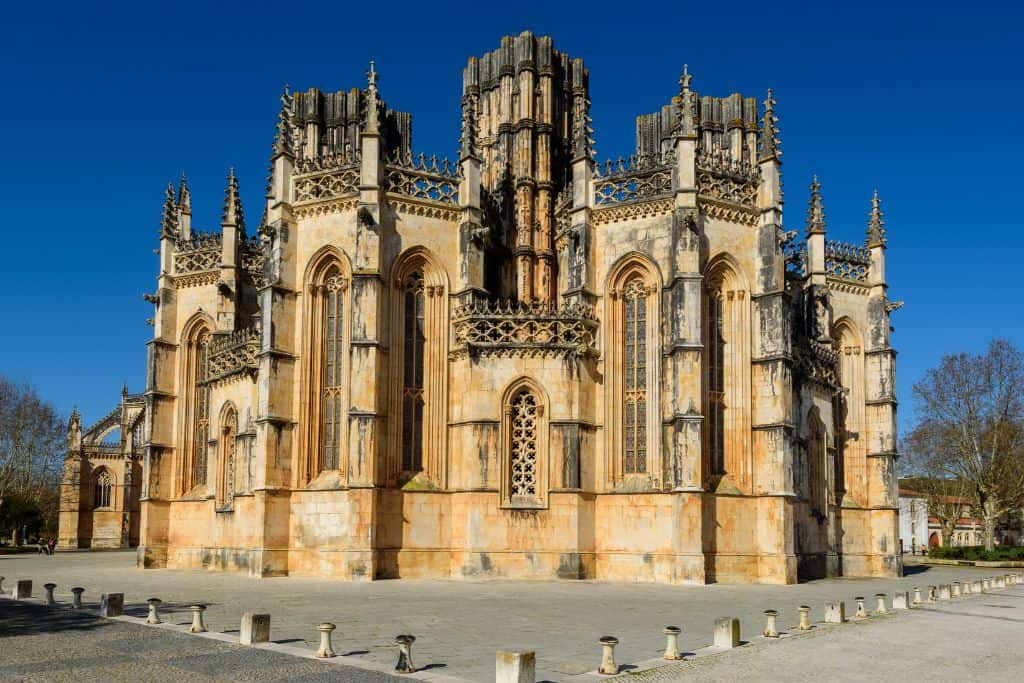
Alcobaca: Love, Tragedy, and Gothic Splendor
The town of Alcobaca is home to the Alcobaca Monastery. A symbol of love and tragedy that has stood the test of time. This majestic Gothic monument houses the tombs of King Pedro I and Ines de Castro, whose tragic love story is immortalised in Portuguese history and literature. Visiting the Alcobaca Monastery is a poignant experience that highlights the intertwining of love, art, and history.
20. Explore Portugal’s Oldest and Largest Natural Park, Serra da Estrela
Nestled in the heart of Portugal, Serra da Estrela is the country’s oldest and largest natural park. It is renowned for its rugged landscapes, pristine rivers, and snow-capped peaks. This natural paradise offers a diverse range of activities for outdoor enthusiasts, from hiking and mountain biking to skiing and wildlife watching. The park’s diverse terrain provides opportunities for hiking through lush valleys, exploring rocky outcrops, and gazing at panoramic vistas from its highest peaks. Adventure seekers will find plenty of thrills in Serra da Estrela’s rugged landscapes.
During the winter months, Serra da Estrela transforms into a snow-covered wonderland. And attracts skiers, snowboarders, and winter sports enthusiasts from near and far. The park’s ski resorts offer a range of slopes for all skill levels. This makes it a perfect destination for both beginners and seasoned snow enthusiasts. Experience the magic of winter in Portugal at Serra da Estrela.
21. Visit the Sanctuary of Fatima

Fátima is most famous for the fact that a miracle that happened in 1917 was recognised by the Vatican. It is said that the miracle was that the Virgin Mary appeared to 3 children in town and gave them several important messages of future events. Each message, bar one, has occurred such as the start of World War Two. This once small village is now a famous Catholic pilgrimage site that draws over 6 million visitors each year. It is well worth a visit even if you’re not interested in the religious aspect.
The main attraction in Fatima is the Sanctuary of Fátima, a giant complex of buildings with a large church. The centrepiece is the Basilica of Our Lady of the Rosary, which is a neoclassical church that houses the tombs of the three children. Nearby to it is the Chapel of the Apparitions which marks the exact spot of the Marian apparitions. When we visited we couldn’t get over the size of it!
22. Explore the Old Town in Obidos
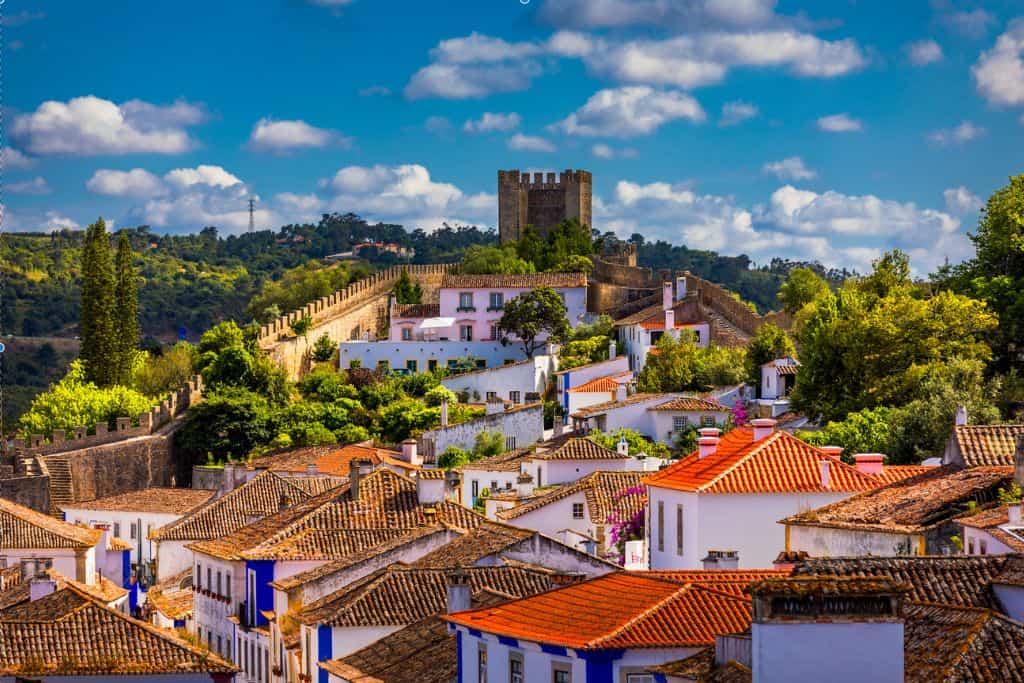
Óbidos is the home of one of the best-preserved medieval castles in whole of Portugal. And is also famous for being fully encircled by its medieval castle walls. You can walk freely along the tops of them, and you can enjoy a panoramic view of the picturesque countryside that stretches out around Óbidos.
As you wander through the narrow streets of Obidos, you’ll encounter well-preserved medieval architecture, quaint shops selling local handicrafts, and cozy cafes serving traditional Portuguese delicacies. The town’s historical significance is palpable in its centuries-old churches, charming squares, and imposing castle.
No visit to Obidos is complete without sampling its culinary delights, from the famous Ginjinha cherry liqueur to the sweet treats of the region.
23. Visit the World Heritage Site of Evora
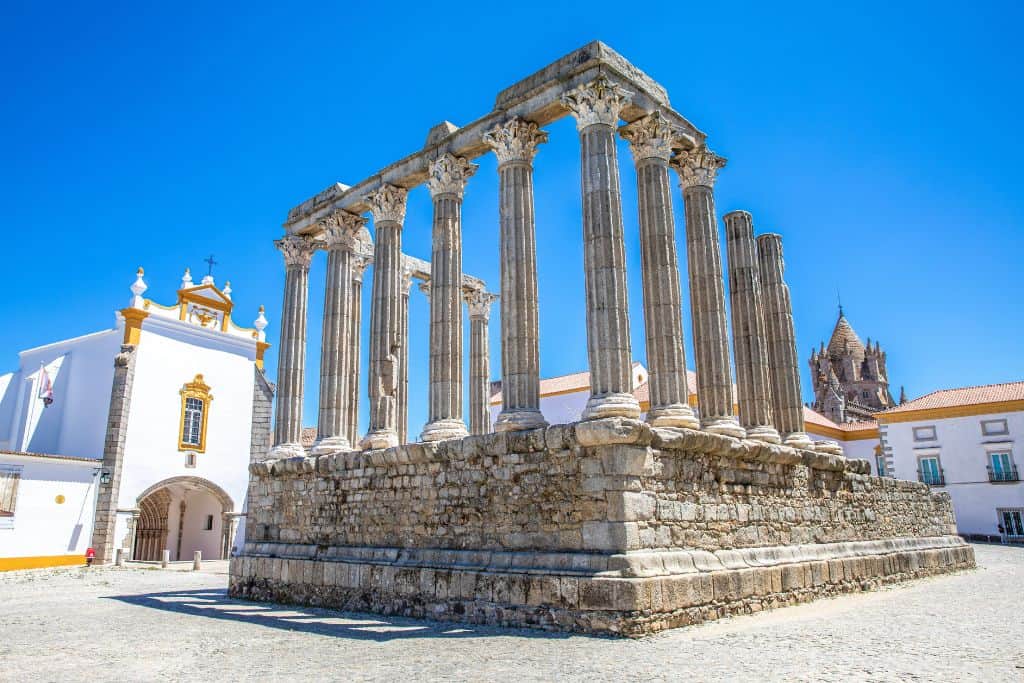
Evora is a city steeped in history and culture. It is a treasure trove of architectural wonders and ancient relics that date back centuries. Designated as a UNESCO World Heritage Site, Evora boasts a wealth of historical landmarks, including Roman ruins, medieval palaces, and Renaissance churches that showcase the city’s rich heritage. Exploring Evora is a journey through time and a chance to delve into the layers of Portugal’s past. The city’s Roman Temple, Gothic Cathedral, and Renaissance palaces are testaments to its diverse cultural heritage and artistic legacy. Strolling through Evora’s cobblestone streets is like traversing a living museum of human history and achievement.
Portugal Bucket List – The Atlantic Coast
24. Be Amazed by the World’s Biggest Wave in Nazaré

Nazaré is a picturesque fishing village on Portugal’s Atlantic Coast. And is famous for being home to the world’s biggest waves and hosting international surfing competitions. The giant waves of Nazaré are a sight to behold, with towering walls of water that challenge even the most experienced surfers.
Nazaré has earned a reputation as a mecca for big wave surfing, attracting some of the world’s most skilled surfers. Because these surfers come to test their mettle against the towering waves that roll into the bay. Surfers like Garrett McNamara and Maya Gabeira have made headlines with their record-breaking rides at Nazaré. Constantly pushing the boundaries of what is possible in the world of surfing.
If you’re a fan of extreme sports and epic ocean swells then Nazaré is a must-visit destination on your Portugal bucket list. We visited in the summer and so there weren’t any massive world record breaking waves. So, seeing the worlds biggest wave is still on our Portugal bucket list!
25. Surf in Peniche
Peniche is a coastal town located on a peninsula jutting out into the Atlantic Ocean. It is a surfing hotspot known for its consistent waves, diverse surf breaks, and laid-back vibe. Whether you’re a seasoned surfer looking to catch the perfect wave or a beginner eager to learn the ropes, Peniche offers a range of surf spots that cater to all levels of experience. Surfing in Peniche is a thrilling adventure that allows you to connect with the ocean and ride the waves in a stunning natural setting.
Beyond its world-class waves, Peniche is a hub of surf culture and community. It has surf schools, surf shops, and surf camps that cater to surfers of all ages and abilities. The town’s laid-back atmosphere and welcoming locals make it a popular destination for surfers from around the world who come to experience the thrill of riding the waves in a friendly and supportive environment. Immerse yourself in Peniche’s surf culture and discover the joy of catching a wave in this surfing paradise.
26. Walk part of the Portuguese Camino de Santiago
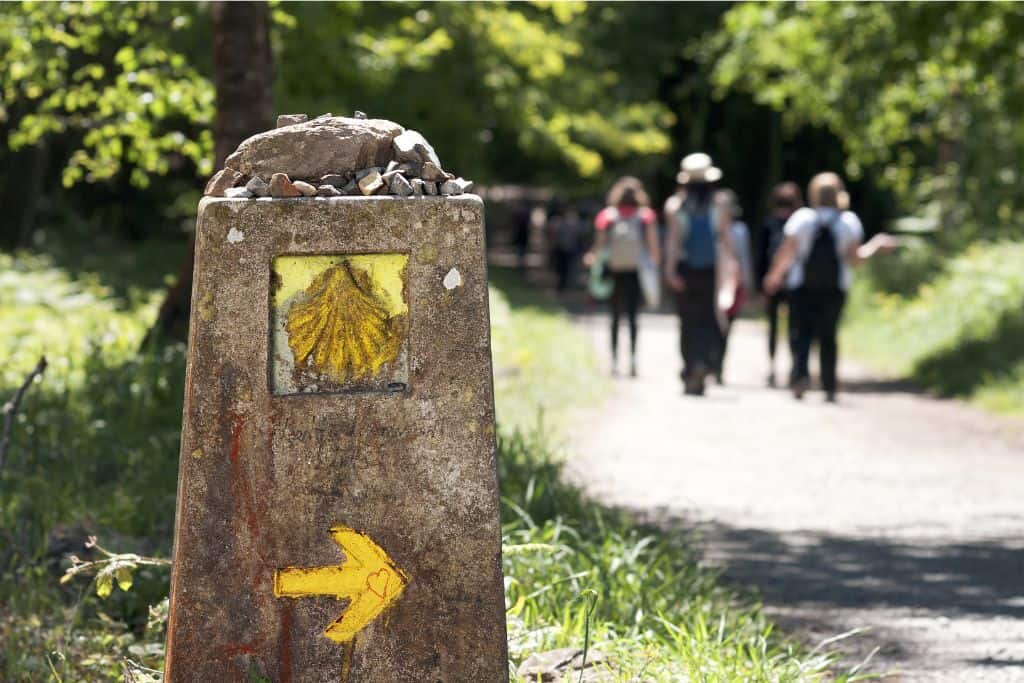
The Camino de Santiago is a network of routes that lead to the shrine of the apostle St. James in the Cathedral of Santiago de Compostela in Galicia, Spain. There is route that runs from Lisbon up to Porto and then into Spain. Walking it is one of the best ways to immerse yourself in Portugal’s culture and natural beauty. This ancient pilgrimage route offers a unique experience for travellers looking to explore the country on foot. The route is dotted with churches, chapels, and historic sites that offer moments of reflection and serenity along the way.
Whether you are seeking a deeper connection with your faith or simply looking to disconnect from the hustle and bustle of everyday life, the Portuguese Camino de Santiago provides a peaceful setting to embark on this inner journey. We met several people walking the route and it was lovely to hear their stories and experiences.
Portugal Bucket List – The Algarve
27. Hike the Seven Hanging Valleys Trail in the Algarve
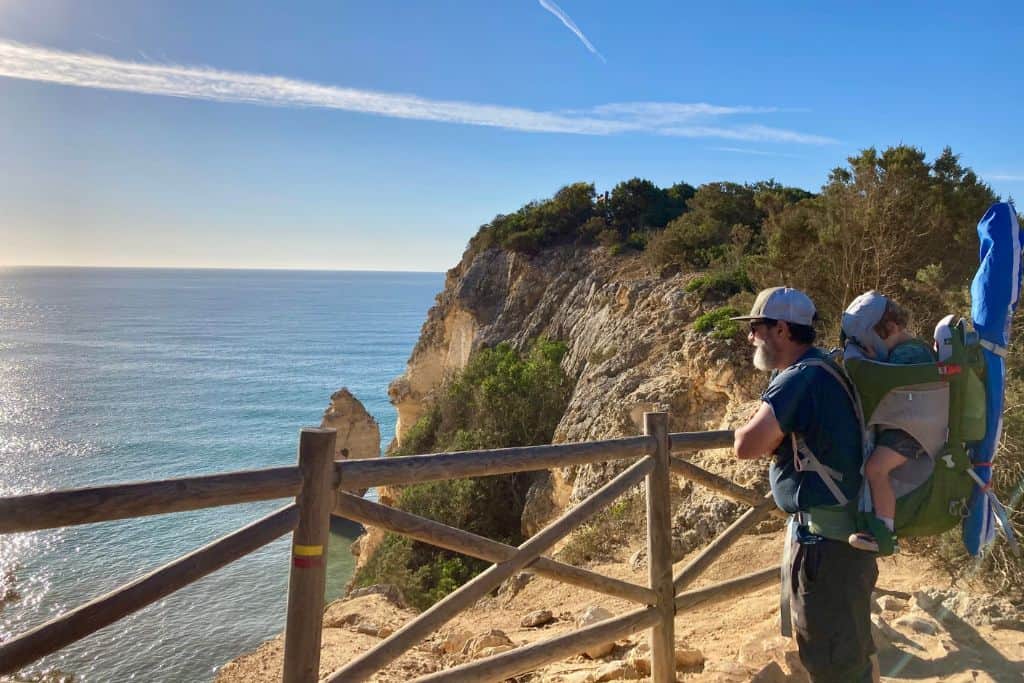
The Algarve region is known for its stunning cliffs, golden beaches, and crystal-clear waters. One of the best ways to experience the natural beauty of the Algarve is by hiking the Seven Hanging Valleys Trail. This picturesque coastal trail stretches along the cliffs from Praia da Marinha to Praia de Vale Centeanes, offering spectacular views of the Atlantic Ocean. As you hike, you’ll encounter hidden caves, secluded beaches, and rugged rock formations, making it a must-visit for nature lovers and adventure seekers alike.
28. Take a Boat Ride to the Spectacular Benagil Sea Cave
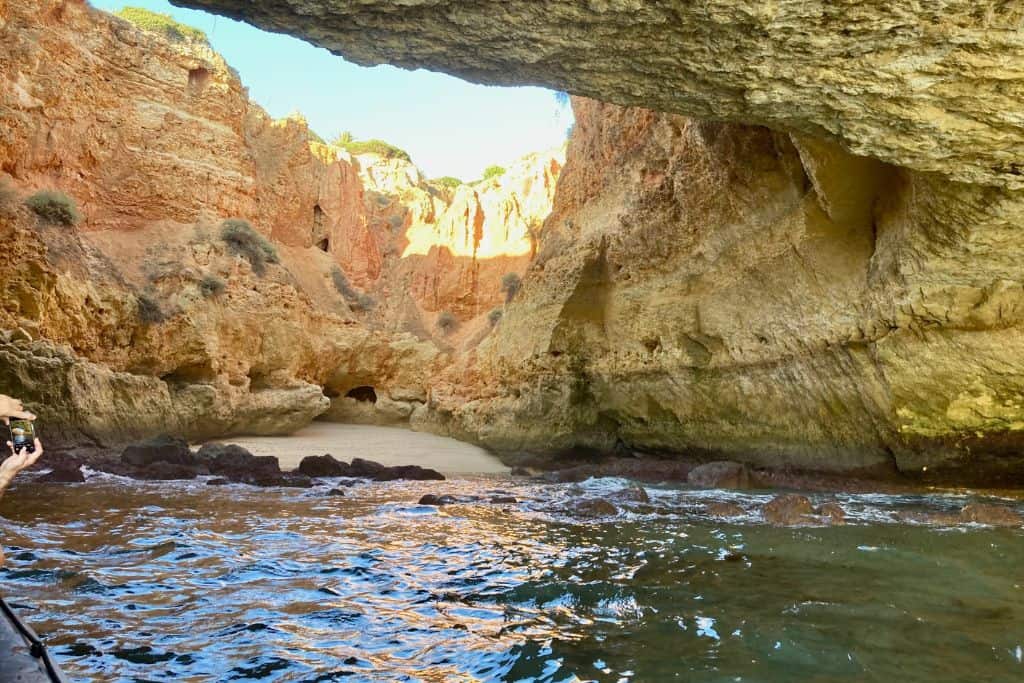
One of the most iconic natural wonders in Portugal is the Benagil sea cave, located along the stunning Algarve coastline. This beautiful sea cave features a large opening in the ceiling, allowing sunlight to filter through and illuminate the interior with a golden glow. The best way to experience the beauty of the Benagil cave is by taking a boat ride from the nearby town of Benagil. As you approach the cave by sea, you’ll be awestruck by the sheer size and grandeur of this natural marvel.
It’s important to note that you used to be able to kayak to the Benagil cave, however following a series of accidents this is no longer possible, and tour companies are now offering kayak trips out to alternative caves. You’ll need to take a boat out to Benagil cave.
Top tip from a travel family: As this is one of the most popular tours in The Algarve there is often a queue of boats waiting to enter the Bengail cave. We went on a sunset tour and there were only a few boats on the water and so it wasn’t busy. Plus we had a pod of 6 dolphins with their baby come join us as the sunset – one the the highlights of our time in The Algarve!
29. Try out lots of beaches in Lagos

Lagos, a picturesque town in the Algarve, is renowned for its stunning beaches and vibrant nightlife. One of the best ways to experience the beauty of Lagos is by beach-hopping along its pristine coastline. Start your day at Praia Dona Ana, known for its golden sands and turquoise waters, before making your way to Camilo Beach, a hidden gem nestled between towering cliffs. End your beach-hopping adventure at Meia Praia, a long stretch of sandy beach perfect for sunbathing and water sports. Our favourite beach was Burgau as it still retained it’s small town beach charm, was safe for swimming with kids and had some cool places for food and drinks.
In addition to sunbathing and swimming, Lagos offers a variety of water activities for adventurous travellers. From kayaking and stand-up paddle boarding to jet skiing and parasailing, there’s no shortage of ways to make a splash in the crystal-clear waters of Lagos. For a more relaxing experience, opt for a boat tour along the coast to admire the stunning sea caves and rock formations that line the shore. Visiting the Algarve with kids is great fun!
30. Check out the outstanding anchor cemetery on Tavira Island
Tavira Island, located off the coast of the Algarve, is home to a unique and intriguing attraction known as the Tavira anchor cemetery. There are over 200 rusty large anchors lying the sand dunes that roll into Barril beach, . The anchors were at one point used on the tuna fishing boats because the island used to be the home of the fishermen in the fishing season. The fishermen decided to abandon their anchors at the beach when the tuna population declined.
The old fishing shacks are now restored and are now busy little cafes and restaurants. Plus the old railway line which used to transport tuna has now been converted to ferry tourists as a scenic train.
31. Discover the ‘Bone Chapels’ in both Evora & Faro
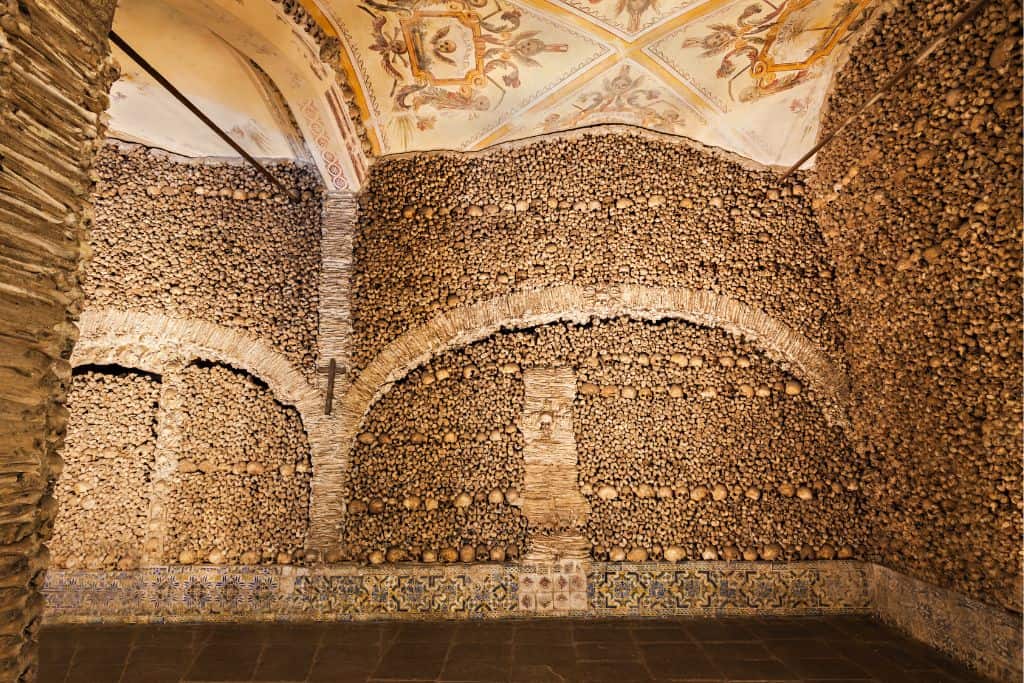
For a truly unique and macabre experience, visit the Capela dos Ossos, or Bone Chapels, in the cities of Evora and Faro. These eerie chapels are adorned with human bones and skulls. They serve as a reminder of the transient nature of life and the inevitability of death. While the Bone Chapels may not be for the faint of heart, they offer a fascinating glimpse into Portugal’s religious and cultural history.
Inside the Capela dos Ossos, intricate patterns and designs made from human bones cover the walls and ceilings. The bones are arranged in a variety of shapes and motifs, from crosses and archways to religious symbols and floral patterns. The Evora Bone Chapel is the bigger of the two and can be found near the St. Francis Church (“Igreja de São Francisco”) in the Évora Chapel. It is made from the human bones of more than 5,000 people and measures 11m wide and 18m long .
32. Go Diving in the Algarve

The Algarve’s clear waters and diverse marine life make it a popular destination for scuba diving and snorkelling enthusiasts of all ages. Whether you’re a novice diver or an experienced underwater explorer, the Algarve offers a range of dive sites to suit all skill levels. Explore underwater caves, vibrant coral reefs, and ancient shipwrecks as you discover the hidden treasures of the Algarve’s coastal waters.
During your diving adventure in the Algarve, you’ll have the opportunity to encounter a wide variety of marine life, including colorful fish, octopuses, and seahorses. Keep an eye out for larger species such as moray eels, groupers, and even the occasional dolphin or shark. The Algarve’s warm waters and excellent visibility make it an ideal destination for underwater photography and marine conservation efforts.
33. Watch the Sunset at Sagres
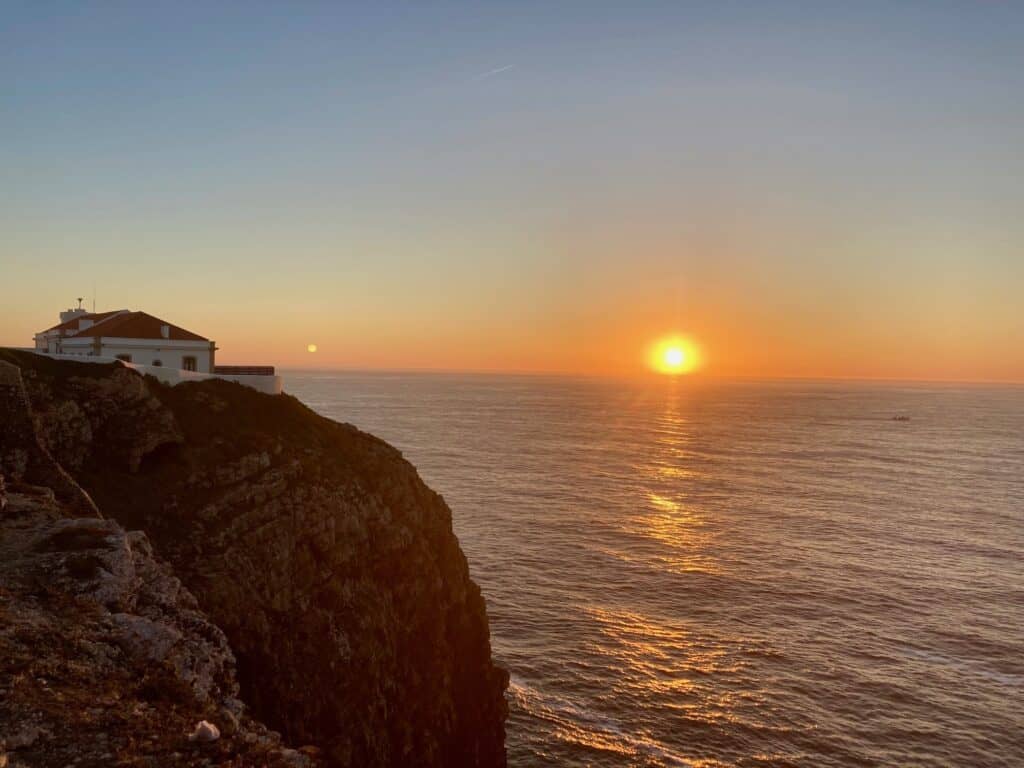
Sagres, located at the southwestern tip of Portugal, is famous for its dramatic cliffs, rugged coastline, and spectacular sunsets. Watching the sun dip below the horizon at Sagres is a magical experience that should not be missed. Find a scenic spot along the cliffs, sit back, and relax as the sky transforms into a kaleidoscope of colors, casting a warm glow over the Atlantic Ocean.
The calming atmosphere and panoramic views make Sagres a popular spot for romantic walks, meditation, and contemplation. Whether you’re traveling solo, with a loved one, or with friends, watching the sunset at Sagres is a peaceful and unforgettable experience.
Top tip from a travel family: It’s worth arriving at the Sagres lighthouse at least an hour before the sunset so that you can enjoy the golden hour. However, there are no cafes or shops at the Sagres lighthouse, and so you should come prepared. We brought our gas cooker with us and make our dinner sat on the wall at the lighthouse and it was magical!
Portugal Bucket List – The Azores
34. Swim in a natural hot spring in the Azores
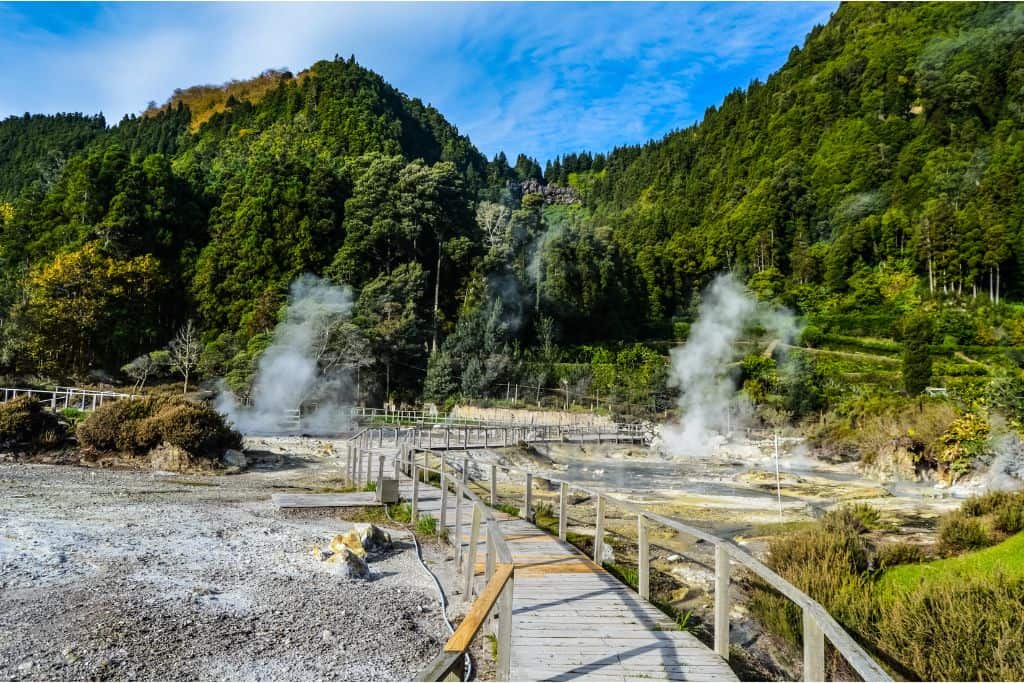
An experience in the hot springs on the Azorean island of São Miguel has to be on your Portgual bucket list. São Miguel is largest of the Azores – a chain of islands in the Atlantic Ocean – and has a wide selection of hot springs to enjoy.
There are several different geothermal springs on the island and each has its own unique feel. Terra Nostra is the most famous and is known for its large spring-fed pool that is so rich with iron and other minerals that the water is almost golden in colour. At Terra Nostra there are smaller springs as well as a botanical garden and a restaurant where you can eat cozido, an Azorean stew cooked underground using geothermal heat.
Another cool spot on São Miguel is in Ponta da Ferraria, where a hot spring meets the ocean just where some rocks make a natural pool. To be able to enjoy it, you’ll have to time the tides just right – otherwise it can be too hot or too cold. It’s a magical experience feeling the water’s temperature ebb and flow as the hot spring water mixes with the brisk Atlantic waters. And what is great is that best of all, it’s free!
35. Go on a Whale Watching Expedition in the Azores
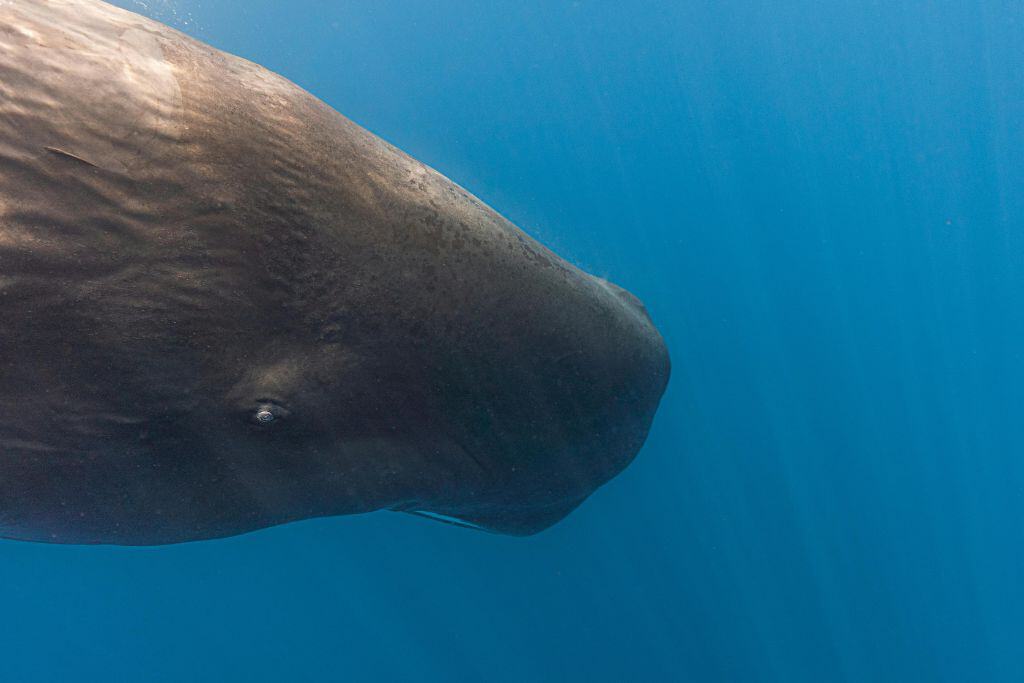
The Azores are a hotspot for marine biodiversity, making them one of the best places in the world for whale watching. Embark on a whale watching expedition in the Azores to spot a variety of whale species, including sperm whales, humpback whales, and even the elusive blue whale.
Whale watching tours in the Azores not only offer the chance to see these magnificent animals up close but also provide valuable insights into marine conservation efforts. Experienced guides and marine biologists accompany each expedition, sharing knowledge about whale behaviour, migration patterns, and the importance of protecting these vulnerable species. By participating in a whale watching tour, you contribute to the preservation of the Azores’ marine ecosystem and support sustainable tourism practices.
Portugal Bucket List – Madeira
36. Go Hiking at Sunrise on Madeira
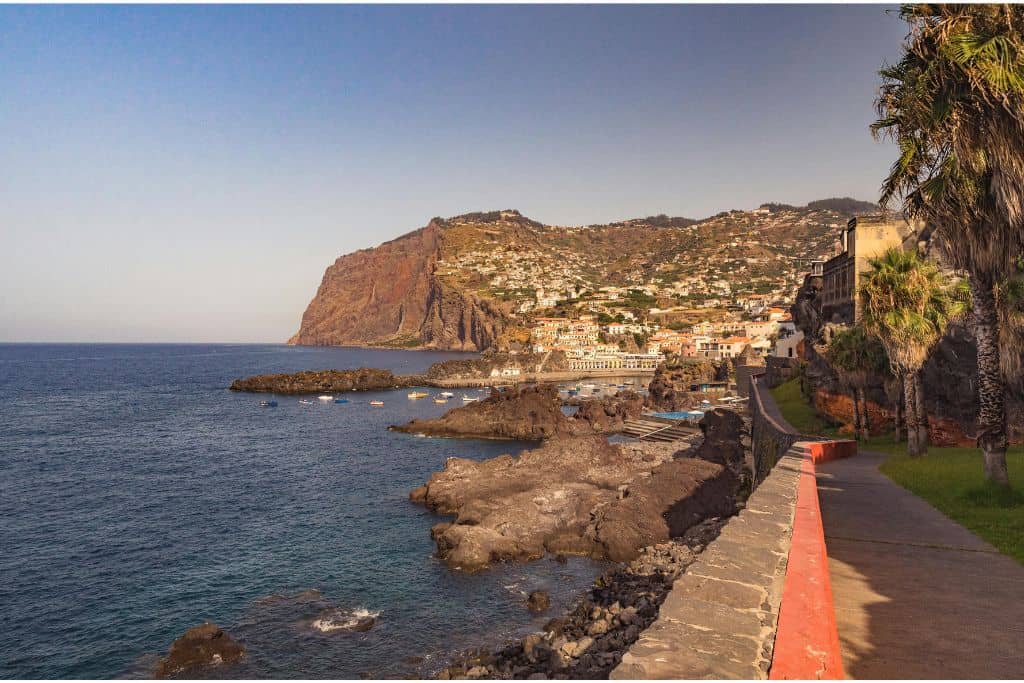
Madeira Island, known as the “Pearl of the Atlantic,” is a paradise for outdoor enthusiasts and nature lovers. One of the best ways to experience the beauty of Madeira is by hiking at sunrise, when the island is bathed in soft morning light and the air is filled with the sounds of nature waking up. Choose from a variety of scenic trails that wind through lush forests, along rugged coastlines, and up to panoramic viewpoints for a memorable sunrise hike.
There are moderate and flat levada walks that take you through the island’s forested interior (a UNESCO World Heritage Site). And also more challenging mountain summits that see you rise up above the clouds making Madeira is a hiker’s paradise.
37. Swim with Dolphins in Madeira

Madeira is not only a hotspot for hiking and natural beauty but also a great place to get up close and personal with marine life. One of the most unforgettable experiences you can have in Madeira is swimming with dolphins in their natural habitat. Join a guided excursion led by experienced marine biologists and conservationists to swim alongside playful dolphins, learn about their behaviour, and contribute to research and conservation efforts.
Final Thoughts on a Portugl Bucket List
We absolutely loved our time in Portugal and enjoyed creating a bucket list of places, attractions and beaches to visit. What’s great fun is that there is such variety and the places are all very close together. You can spend a day taking in a couple of attractions and not need to drive too far.
To be really able to enjoy your time in Portugal and ticking each place off of your bucket list then you need to really hire a car and self drive yourself. You’ll want to be able to enjoy each stop and take your time soaking in the atmosphere of each experience.
